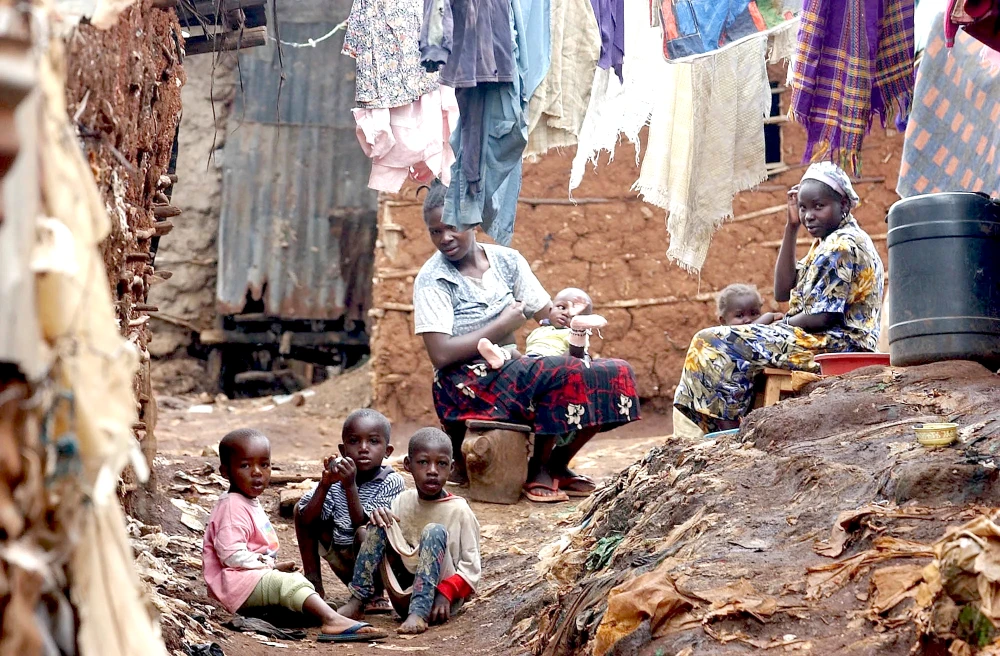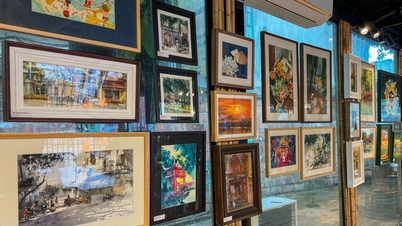Four years of external shocks, especially the Covid-19 pandemic, have made foreign debt servicing impossible for many developing economies . Government coffers are rapidly depleting and financial challenges are mounting.

Editor's note: After shocks such as the Covid-19 pandemic, inflation, post-Covid-19 difficulties, conflicts and natural disasters, many developing countries have had to shoulder additional foreign debt. Now, the ability to repay debts and develop the economy of these countries is facing great challenges. Many solutions have been proposed to help developing economies avoid falling into bad debt.
Current situation
When the US Federal Reserve raised interest rates on Treasury bonds in March 2022, currencies in low-income countries plummeted in value and governments lost access to capital markets. In sub-Saharan Africa, 19 countries were unable, or at high risk, to repay their debts.
Violent protests began in Nairobi, Kenya in June 2022 as a direct response to the government's proposal for a finance bill that would increase taxes to pay off foreign debt. Kenya's debt burden has forced the country's leaders to slash the federal budget, including health spending, to pay for debt repayments.
The government has also delayed civil servant salaries. Nairobi will have to issue international bonds in February 2023 at a sky-high 10% interest rate, compared with around 6% for bonds it issued in 2021, to refinance existing debt and meet development needs. Kenya is currently spending 75% of its tax revenue on debt servicing.
As governments divert more and more resources to servicing their debt burdens, they will have less money for investments that improve people’s lives. The total value of interest payments by the world’s 75 poorest countries, more than half of which are in Africa, has quadrupled over the past decade. By 2024, they are expected to spend more than $185 billion, or about 7.5% of their GDP, on debt servicing.
That’s more than the combined annual spending by these countries on health, education and infrastructure, according to the World Bank. Stagnant growth has reduced countries’ ability to contain infectious diseases amid the growing impacts of climate change, increasing political instability and forcing people to migrate. Nearly 40% of countries eligible for development aid from the World Bank now have lower GDP per capita than before the pandemic, in what the World Bank describes as a “historic reversal in development.”
vicious circle
To better understand the plight of foreign debt, consider Ethiopia. In the 1980s, it was one of the poorest countries in the world and suffered a devastating famine. Yet it has become one of the world’s greatest health and development success stories.
Between 2000 and 2019, deaths from infectious diseases were halved, under-five mortality fell by two-thirds, and maternal mortality fell by three-quarters. Access to sanitation and clean water also improved dramatically. Between 2004 and 2019, Ethiopia’s GDP per capita increased by almost 200%, and its economy grew by about 10% per year.
But in recent years, those gains have been lost. Ethiopia has suffered from a series of overlapping crises, from a disease outbreak to a brutal civil war in Tigray. Hundreds of thousands of civilians have died, compounded by natural disasters such as drought, floods and swarms of billions of locusts. With tax revenues dwindling, international aid for basic health and development has fallen to its lowest level in nearly a decade.
The Ethiopian government does not have the money to cope or meet the needs of its more than 120 million people. Debt has become the largest item in the government budget, while investment in human development has stagnated. The government spent just $8 per capita on health compared to $26 on debt servicing in the fiscal year ending July 2021.
Plans to transform the country’s health system have been put on hold. Without adequate funding and stable salaries, health workers are leaving the profession. A vicious cycle of reduced investment in health and development due to lack of financial resources leads to reduced economic growth and consequently reduced health spending.
KHANH MINH compiled
Source: https://www.sggp.org.vn/no-nuoc-ngoai-de-nang-cac-nen-kinh-te-dang-phat-trien-su-dao-nguoc-lich-su-post761351.html




![[Photo] Lam Dong: Images of damage after a suspected lake burst in Tuy Phong](https://vphoto.vietnam.vn/thumb/1200x675/vietnam/resource/IMAGE/2025/11/02/1762078736805_8e7f5424f473782d2162-5118-jpg.webp)


![[Photo] President Luong Cuong receives US Secretary of War Pete Hegseth](https://vphoto.vietnam.vn/thumb/1200x675/vietnam/resource/IMAGE/2025/11/02/1762089839868_ndo_br_1-jpg.webp)







































































































Comment (0)